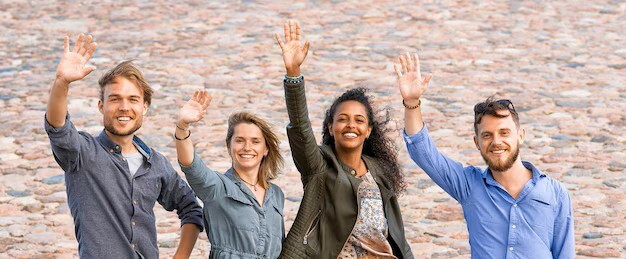The Canary Islands (Islas Canarias) are a Spanish archipelago located in the Atlantic Ocean, off the northwestern coast of Africa. With their volcanic landscapes, beautiful beaches, and year-round pleasant weather, they are one of the most popular tourist destinations in Spain. 🌞
.gif?width=856&height=447&name=Imagen%20-%20Post%20-%203%20best%20ways%20(29).gif)
❓ Do the Canary Islands belong to Spain? 🇪🇸
Yes, the Canary Islands belong to Spain. They are an autonomous community of Spain, with their own parliament, but they are officially part of Spanish territory. The islands are located off the coast of North Africa, but politically and administratively, they are an integral part of Spain. 🌍
🗺️ What are the 7 Canary Islands? 🌋
The Canary Islands are made up of 7 main islands and several smaller ones. Here are the seven largest:
-
🌟 Tenerife
-
🌿 Gran Canaria
-
🌞 Lanzarote
-
🌴 Fuerteventura
-
🌷 La Palma
-
🌳 La Gomera
-
🌟 El Hierro
These islands, together with La Graciosa (the smallest inhabited island 🏝️) and others, form the beautiful Canarian archipelago.
🏖️ What is the nicest Canary Island to visit? 🌞
The 'nicest' Canary Island really depends on what you're looking for:
 🌟 Tenerife:
🌟 Tenerife:
Known for its vibrant nightlife 🌙, stunning beaches 🏖️, and Mount Teide 🌋, the highest peak in Spain.
 🌿 Gran Canaria:
🌿 Gran Canaria:
Famous for its varied landscapes 🌿, from dunes 🏜️ to lush forests 🌳, as well as its lively capital, Las Palmas.
 🌞 Lanzarote:
🌞 Lanzarote:
Ideal for lovers of unique volcanic landscapes 🏞️ and creative architecture 🏛️.
 🌴 Fuerteventura:
🌴 Fuerteventura:
A paradise for beach lovers 🌊, offering long sandy beaches 🏖️ and windsurfing spots 🏄♂️.
 🌷 La Palma:
🌷 La Palma:
Known as the 'Beautiful Island' 🌺 with rich greenery 🌳 and hiking trails 🥾.
 🌳 La Gomera:
🌳 La Gomera:
A quiet island 🕊️ perfect for nature lovers and hiking enthusiasts 🏞️.
 🌟 El Hierro:
🌟 El Hierro:
The smallest and least touristy 🌍, ideal for those seeking tranquillity and nature 🌿.
Each island has its own charm! Which one would you like to visit? ✈️
🌞 What is so special about the Canary Islands? 🤩
The Canary Islands are special for several reasons:
🏖️ Diverse Landscapes: From golden beaches and volcanic craters 🌋 to lush forests 🌲 and rugged mountains ⛰️.
🌤️ Great Weather: Mild subtropical climate all year round.
🏛️ Cultural Heritage: Spanish 🇪🇸 and indigenous Guanche influences 🏺.
🦜 Biodiversity: Unique species of plants and animals 🐢.
🌊 Famous Beaches: Perfect for relaxation and water sports 🏄♀️.
🏝️ Canary Islands Spain Beaches 🌊
Some of the most stunning beaches include:
🌅 Playa de las Teresitas (Tenerife): Calm waters, golden sand, perfect for families 👨👩👧👦.
🌴 Playa de Sotavento (Fuerteventura): Vast dunes 🏜️, ideal for windsurfing 🏄♂️.
🏖️ Playa de Papagayo (Lanzarote): Secluded, surrounded by cliffs 🏞️, crystal-clear waters 🌊.
🌤️ Canary Islands Spain Weather 🌡️
The islands enjoy a mild subtropical climate 🌴, with temperatures averaging 18°C in winter ❄️ and 24°C in summer ☀️. Ideal year-round 🌍.
🏄♂️ Canary Islands Spain Things to Do 🚶♀️
🥾 Hiking: Mount Teide (Tenerife) and Roque Nublo (Gran Canaria).
🏖️ Beaches: Relax or try surfing, windsurfing, and diving 🤿.
🎭 Cultural Activities: Museums, traditional food 🍴, local festivals 🎉.
🦜 Wildlife Watching: Whale watching 🐋, bird watching 🦅.
🌌 Stargazing: La Palma offers clear skies 🔭.
🌍 Canary Islands Spain Map 🗺️
A map is useful to visualise all islands: Tenerife, Gran Canaria, Lanzarote, Fuerteventura, La Palma, La Gomera, El Hierro, and La Graciosa.

🌱 Nature and Biodiversity 🦜
Home to unique flora and fauna 🌿, including the giant lizard of El Hierro 🦎 and migratory birds 🦅. Perfect for nature lovers and hiking enthusiasts! 🌟
🥘 Canarian Cuisine 🍴
Papas arrugadas with mojo picón 🍽️: Small potatoes with a spicy sauce.

Gofio 🍞: Toasted grain flour used in soups and desserts 🍯.

Great way to learn about culture while practising Spanish! 🍴
📖 Cultural Lessons: History and Traditions 🏝️
Carnival in Santa Cruz de Tenerife 🎭: Music 🎶, dancing 💃, and costumes 🎉.

Guanche Heritage 🏺: Original inhabitants of the islands influencing traditions and culture.

📝 Vocabulary Practice 📚
🌴 Isla - Island
🏖️ Playa - Beach
🌋 Volcán - Volcano
🌤️ Clima - Climate
🥾 Senderismo - Hiking
🏛️ Monumento - Monument
Example sentences:
La isla de Tenerife es famosa por el volcán Teide. 🌋
Me encanta ir a la playa para descansar y nadar en el mar. 🏖️
📝 Test everything you’ve learned
Instructions: Choose the correct option. Good luck! 😊
1. What is the name of the highest volcano in the Canary Islands?
2. Which island is known as the 'Beautiful Island' with lush greenery and hiking trails?
3. What is the traditional Canarian dish of small potatoes served with spicy sauce called?
4. How do you say 'beach' in Spanish?
5. How do you say 'hiking' in Spanish?
Conclusion ✨
The Canary Islands are a paradise for nature lovers and an excellent place to immerse yourself in Spanish language and culture. Diverse landscapes 🌳, unique wildlife 🦋, and rich traditions 🎭 make it an ideal destination to practise Spanish and enjoy Spain fully.
Keep learning Spanish:
❓ Question for you:
If you could visit one of the Canary Islands, which one would you choose and why? 🌴
Write your answer in Spanish and tell us what you would like to do there! 🏖️🌋🥾




.png)

-Nov-06-2025-10-52-32-0014-AM.jpg)
